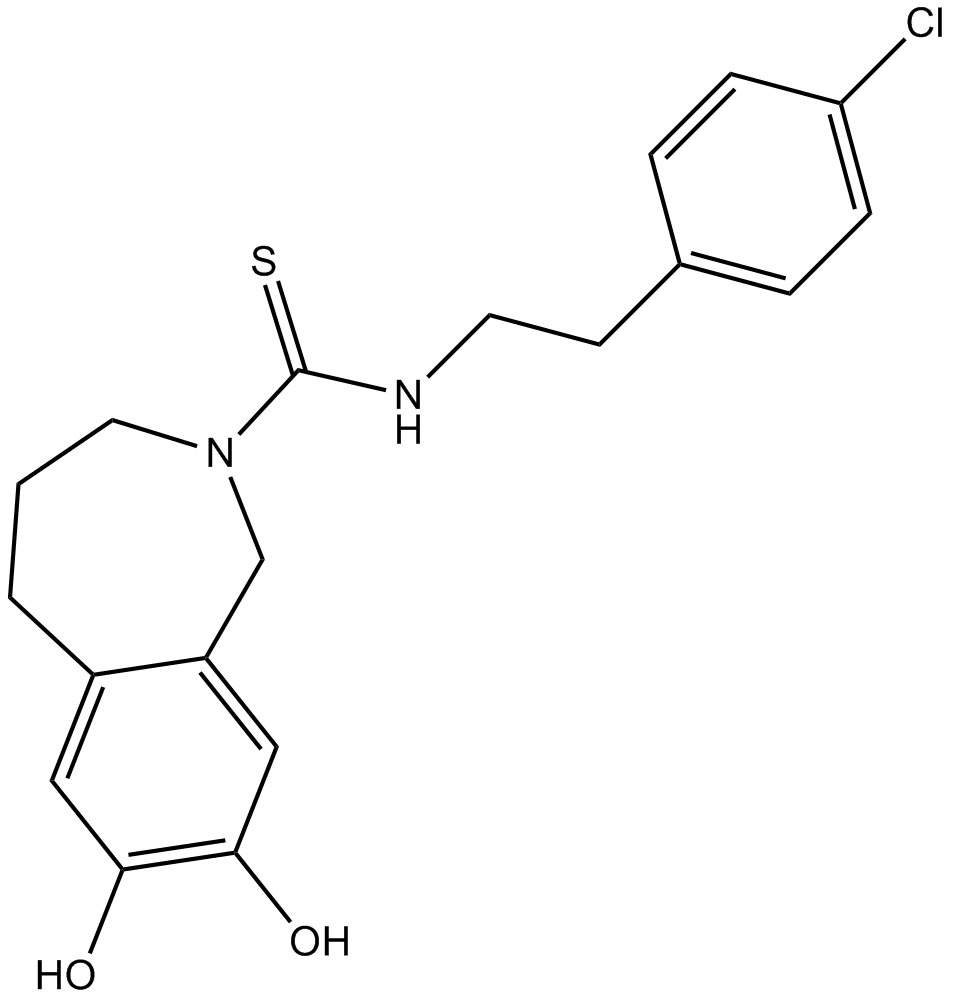Capsazepine |
| Catalog No.GC17918 |
A TRPV1 antagonist
Products are for research use only. Not for human use. We do not sell to patients.

Cas No.: 138977-28-3
Sample solution is provided at 25 µL, 10mM.
Capsazepine is a competitive antagonist of vanilloid (capsaicin) receptor with IC50 value of 562 nM.[1]
Capsazepine is a synthetic analogue of capsaicin, which activates the TRPV1 ion channel, thereby, blocks the painful sensation of heat caused by capsaicin. Capsazepine blocked voltage-activated calcium currents in adult rat dorsal root ganglion neurons with EC50 value of 7.7±1.4 μM.[2] Capsazepine was also able to block the response of TRPM8 to menthol (IC50=18±1.1 μM).[3] Capsazepine also inhibited nicotinic acetylcholine receptors in rat trigeminal ganglia at 10μM.[4] In human colon cancer cells, capsazepine treatment activated caspase -8, –9, and -3, induced death receptors (DRs) DR5 and DR4, then sensitized the cells to TRAIL-induced apoptosis.[5] Capsazepine is thought to be a tool to study the TRPV1 ion channel.
References:
1. C. S. Walpole, S. Bevan, G. Bovermann, J. J. Boelsterli, R. Breckenridge, J. W. Davies, G. A. Hughes, I. James, L. Oberer, J. Winter and et al., J Med Chem 1994, 37, 1942-1954.
2. R. J. Docherty, J. C. Yeats and A. S. Piper, Br J Pharmacol 1997, 121, 1461-1467.
3. H. J. Behrendt, T. Germann, C. Gillen, H. Hatt and R. Jostock, Br J Pharmacol 2004, 141, 737-745.
4. L. Liu and S. A. Simon, Neurosci Lett 1997, 228, 29-32.
5. B. Sung, S. Prasad, J. Ravindran, V. R. Yadav and B. B. Aggarwal, Free Radic Biol Med 2012, 53, 1977-1987.
Average Rating: 5 (Based on Reviews and 30 reference(s) in Google Scholar.)
GLPBIO products are for RESEARCH USE ONLY. Please make sure your review or question is research based.
Required fields are marked with *




